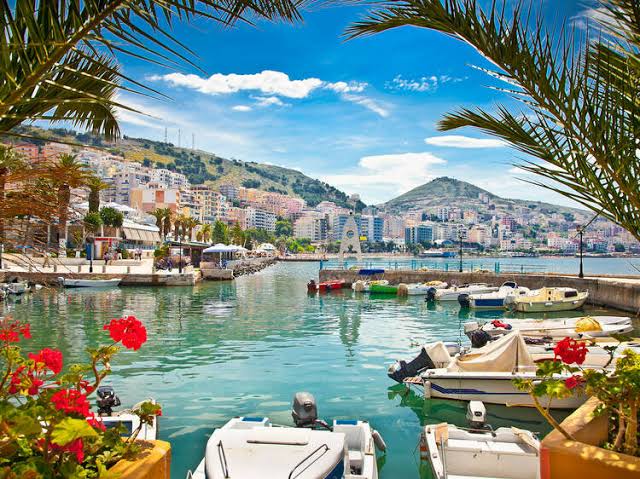Ocean Coral & Turquesa: A Symbol of the Sea’s Untold Beauty
Ocean Coral & Turquesa: A Symbol of the Sea’s Untold Beauty
In the depths of the world’s oceans, beyond the reach of human touch, lies a natural wonder that has captivated the hearts and minds of explorers, scientists, and dreamers alike: the coral reefs. These vibrant ecosystems, often referred to as the “rainforests of the sea,” are home to an astonishing array of marine life, from the smallest plankton to the grandest of sea turtles. Yet, one of the most striking manifestations of this underwater realm is the rare and elusive Ocean Coral & Turquesa—a symbol of both the fragility and the resilience of the ocean’s ecosystems.
The Enigma of the Ocean Coral & Turquesa
The Ocean Coral & Turquesa is not a single species, but rather a phenomenon—an intricate fusion of two coral varieties. One, a brilliant orange-red coral, reminiscent of the hues of a fiery sunset; the other, a delicate turquoise species that shimmers like the surface of the sea at midday. Together, they form a vibrant tapestry that exists in only a few remote corners of the world’s oceans. These reefs are rare, not only in their beauty but in their composition, offering a unique glimpse into a thriving underwater world that is all too often threatened by human activity.
What makes these coral formations so unique is the interplay of color and life. The Ocean Coral, with its intricate branches, creates a foundation for a diverse range of marine life, from tiny clownfish darting between crevices to the majestic manta rays gliding above. The Turquesa, with its iridescent glow, reflects the sunlight in such a way that it almost seems as though the sea itself is breathing beneath the surface.
The Birth of Ocean Coral & Turquesa Reefs
Ocean Coral & Turquesa reefs are born in the shallow, warm waters of tropical seas, where the balance between sunlight, temperature, and water chemistry creates the perfect environment for these corals to thrive. However, the creation of these reefs is a slow and delicate process. Coral polyps, tiny creatures that build the reef structure, secrete calcium carbonate, which forms the hard skeleton of the reef. Over centuries, these structures grow, layer by layer, creating the complex and vibrant ecosystems we associate with coral reefs.
The turquoise coral, known for its rare ability to thrive in deeper waters with lower light, has become a subject of fascination for marine biologists. Unlike other coral species, which rely on symbiotic algae to photosynthesize and produce energy, the Turquesa coral has developed unique adaptations that allow it to flourish even in areas where sunlight is scarce. This phenomenon has led some to refer to it as the “night-blooming” coral—an apt description, considering the way it pulses with bioluminescence under the moonlight.
The combination of these two coral species—Ocean Coral and Turquesa—creates an ecosystem unlike any other. The vibrant colors attract a multitude of marine creatures, all of whom play a vital role in maintaining the health of the reef. Fish, crustaceans, mollusks, and even larger predators like sharks and rays rely on these reefs for food, shelter, and breeding grounds. The symbiosis between these organisms is a testament to the delicate balance that governs the ocean’s ecosystems.
The Cultural Significance of Ocean Coral & Turquesa
Beyond their biological and environmental importance, Ocean Coral & Turquesa reefs hold a deep cultural significance. For centuries, indigenous peoples living along the coastlines of the Pacific and Indian Oceans have revered these reefs as sacred places, believing them to be the home of sea gods and guardians of the deep. In many cultures, the coral reefs are seen as protectors, keeping storms at bay and guiding fishermen safely home. The vibrant colors of the coral, with their deep, resonating blues and fiery oranges, have inspired countless myths, songs, and artworks.
One such legend comes from the island of Arelis, a small archipelago in the South Pacific. According to local lore, the Ocean Coral & Turquesa reefs were created by the goddess Taimara, who wept for the loss of her beloved who had drowned in the sea. Her tears, stained by the endless blue of the ocean and the fiery passion of her love, gave birth to the colorful reefs, which are said to protect sailors and fishermen from the dangers of the open water.
This reverence for the reefs extends to modern conservation efforts as well. Organizations around the world have worked tirelessly to preserve these fragile ecosystems, recognizing their significance not only as natural wonders but also as cultural treasures. In recent years, the Ocean Coral & Turquesa reefs have become a symbol for marine conservation, representing the urgent need to protect the ocean’s biodiversity in the face of climate change, overfishing, and pollution.
The Threats to Ocean Coral & Turquesa
Despite their resilience and beauty, Ocean Coral & Turquesa reefs are under grave threat. Rising ocean temperatures, caused by global warming, are one of the biggest challenges facing these ecosystems. Corals are highly sensitive to temperature changes, and even a small increase in water temperature can cause coral bleaching—a phenomenon in which corals expel the algae living within their tissues, leaving them pale and vulnerable. If water temperatures continue to rise at the current rate, many coral reefs, including Ocean Coral & Turquesa formations, may face irreversible damage.
Additionally, the practice of overfishing and destructive fishing methods, such as blast fishing and bottom trawling, have wreaked havoc on coral reefs around the world. The delicate structures that take centuries to build are often destroyed in a matter of days, as fishing vessels scrape the ocean floor or use explosives to catch fish. These practices not only damage the reefs themselves but also disrupt the balance of life within them, causing cascading effects on the entire ecosystem.
Pollution also poses a significant threat to the survival of Ocean Coral & Turquesa reefs. Oil spills, plastic waste, and chemicals from industrial runoff seep into the oceans, poisoning marine life and suffocating coral reefs. The accumulation of debris on the reef can block sunlight, hindering the photosynthesis that many coral species rely on, and eventually leading to their death.
Finally, tourism, while often seen as a boon for local economies, can also have detrimental effects on coral reefs. Divers and snorkelers, eager to witness the beauty of these underwater ecosystems, sometimes unknowingly damage the coral by touching or stepping on fragile structures. Additionally, the pollution from boats and the unsustainable development of coastal areas contribute to the degradation of the reef systems.
Conservation Efforts: Protecting the Ocean’s Heartbeat
In response to these growing threats, a coalition of scientists, environmentalists, and local communities has launched several initiatives aimed at preserving the Ocean Coral & Turquesa reefs. Marine protected areas (MPAs) have been established around key reef systems, where human activity is strictly regulated to minimize damage. These areas serve as sanctuaries for marine life, allowing ecosystems to recover and thrive without the pressures of fishing or development.
Furthermore, scientists are working on innovative solutions to help coral reefs adapt to the changing climate. One such effort involves the cultivation of heat-resistant coral strains in laboratories, which are then planted in reefs to enhance their resilience to temperature fluctuations. Other projects focus on restoring damaged reefs through coral transplantation and artificial reef structures designed to mimic the natural growth patterns of coral.
Public awareness campaigns have also played a crucial role in shifting attitudes toward ocean conservation. By educating the public about the importance of coral reefs and the threats they face, these campaigns have inspired greater support for sustainable practices, both in terms of fishing and tourism. From eco-friendly diving experiences to sustainable seafood initiatives, these efforts are helping to reduce the pressure on fragile coral ecosystems.
The Future of Ocean Coral & Turquesa
As we look to the future, the survival of Ocean Coral & Turquesa reefs depends on our ability to protect and preserve these extraordinary ecosystems. The challenges are many, but so too are the opportunities for positive change. By continuing to push for stronger environmental protections, investing in innovative solutions for coral restoration, and fostering greater awareness of the importance of marine biodiversity, we can ensure that these vibrant, life-sustaining reefs continue to thrive for generations to come.
In the words of the great marine biologist Sylvia Earle, “The ocean is the heartbeat of our planet.” And in the case of the Ocean Coral & Turquesa reefs, this heartbeat is not only a symbol of life’s resilience but also a call to action. To safeguard the beauty of the sea, we must embrace our role as stewards of the ocean, for it is in the preservation of these treasures that we will secure the future of our planet.
This elements of marine biology, mythology, environmentalism, and storytelling to create a compelling narrative around the rare Ocean Coral & Turquesa reefs. The article highlights the beauty of these ecosystems, the threats they face, and the importance of conservation efforts to protect them.







